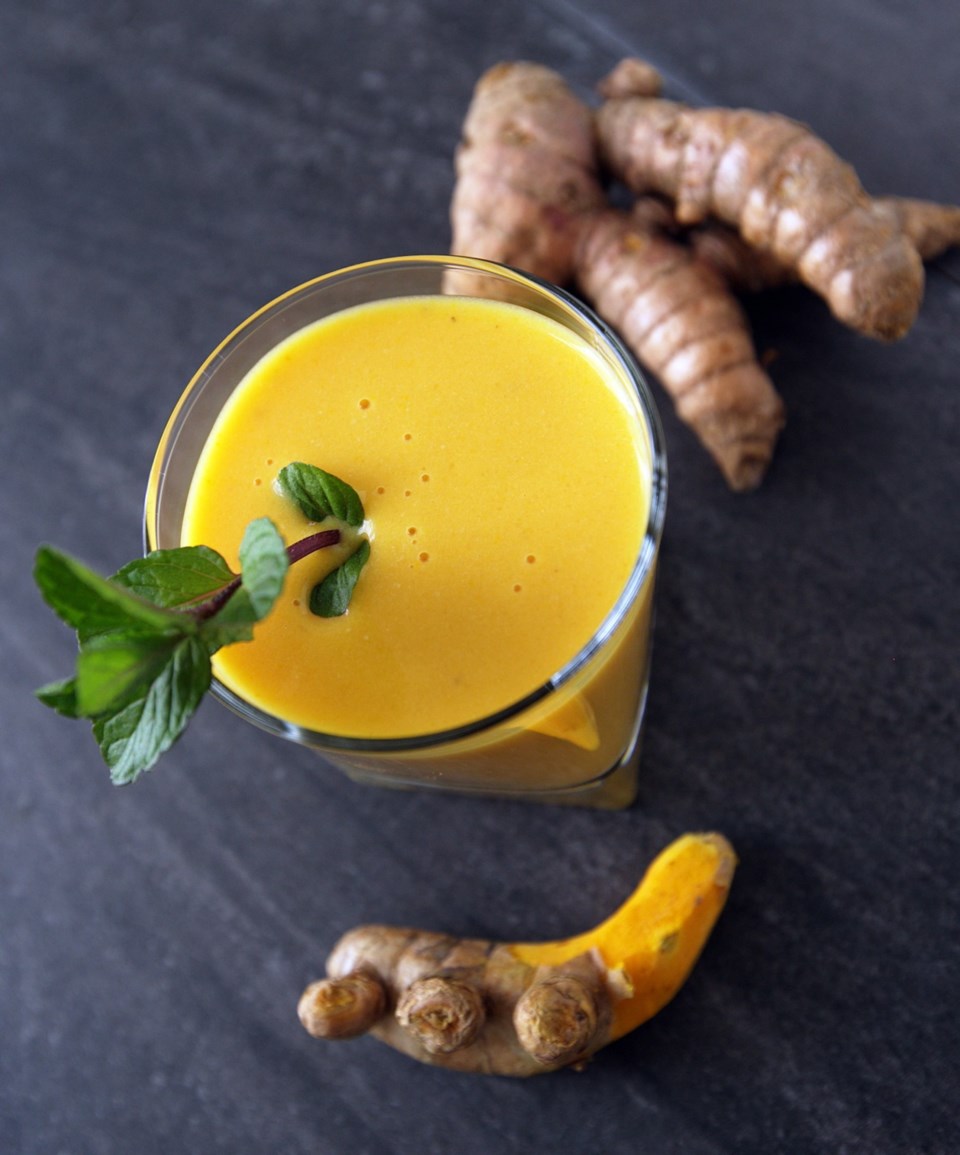 In the kitchens I worked in when I started my cooking career 30-plus years ago, turmeric was considered the poor man’s saffron. It was a��spice that could turn foods a striking yellow-orange colour, as saffron does, but at a fraction of the cost.
In the kitchens I worked in when I started my cooking career 30-plus years ago, turmeric was considered the poor man’s saffron. It was a��spice that could turn foods a striking yellow-orange colour, as saffron does, but at a fraction of the cost.
Turmeric still does that, but these days in North America, its��status has risen significantly, mostly because of its potential health benefits.
Here is a 101 guide to turmeric:
What is turmeric?
Turmeric is the knobby rhizome — underground stem — of a perennial plant that’s related to the ginger family.
How do you buy and store turmeric?
As most folks know, you can buy dried, ground turmeric in the bottled-spice aisle of most supermarkets. You can also buy the rhizome fresh at Asian markets and some supermarkets.
Spice/herb company McCormick says to keep ground spices such as turmeric stored in airtight containers. If kept away from heat, moisture and direct sunlight, it will keep up to three years.
When purchasing fresh turmeric, choose firm pieces free of any soft, sunken spots. If it’s in good condition and stored in a plastic bag in your refrigerator crisper, fresh turmeric will keep at least two weeks.
What does it taste like?
Turmeric has a pungent, bitter flavour, sort of like mustard, pepper and ginger combined, with an earthy edge to it. That taste, and its intense yellow-orange colour, explain why just a little bit of turmeric can add bold taste and colour to a dish.
How do you use turmeric?
Dried, ground turmeric has long been added to curries, mustards and rice dishes. But it can also be used to bolster the colour and flavour of such things as salad dressings, scrambled eggs, vegetable dishes, quinoa pilaf, fish stews, soups, sweets and just about any other dish or drink you can think of.
Grated or thinly sliced fresh turmeric, often combined with fresh ginger, can be steeped in boiling water to make a kind of tea. Peeled fresh turmeric can also be grated, chopped or thinly sliced and added to salads, smoothies, stir-fries, soups, stews and, like dried, ground turmeric, any other dish or drink you think will benefit from its flavour and colour.
What are the potential health benefits?
The deep, yellow-orange colour��of turmeric comes from curcumin, an antioxidant. Studies in animals have shown curcumin may have anti-inflammatory properties, could be beneficial in��fighting certain types of cancers and heart disease, and may help treat��such things as heartburn. In��Chinese and Ayurvedic medicines, turmeric is used for relieving such things as arthritic pain and aiding liver function and digestion.
When culinary turmeric (the spice and fresh rhizome) is used to flavour and colour foods, it’s considered safe to consume. However, the Rexall Pharma Plus website rexall.ca says high doses or long-term use of turmeric may cause indigestion, nausea or diarrhea. Because culinary turmeric is usually only added in small amounts, that over-consumption is more likely to occur through the use of turmeric curcumin supplements (capsules), sold at places such as drug and health-food stores.
Those supplements are much more concentrated than culinary turmeric and are not safe for some people, such as pregnant women, which is why it’s recommended that you consult your doctor before taking them.
Banana, Pineapple and Carrot Smoothie with Turmeric
Start your day with this fresh turmeric-flavoured fruit and vegetable smoothie.
��
Prep time: a few minutes
Cooking time: None
Makes: Two (about 1 cup) drinks
1 medium ripe banana, peeled and sliced
2/3 cup fresh cubed pineapple (see Note)
1/2 cup carrot juice
2 tsp finely grated peeled fresh turmeric
1 tsp finely grated peeled fresh ginger
1 Tbsp lemon juice
1/2 cup Greek yogurt or silken tofu
2 tsp maple syrup or honey, or to taste
2 mint sprigs for garnish (optional)
Place all ingredients, except garnish, in a blender, or in the cup that came with your immersion blender, and purée. Pour into glasses and serve, garnished with mint sprigs, if desired.
Note: If desired, canned, drained, unsweetened pineapple chunks could replace the fresh pineapple called for in this recipe.
Chilled Asparagus with Turmeric Tahini Dressing
Bright green asparagus dressed with a striking looking, slightly bitter tasting dressing flavoured with turmeric.
��
Prep time: 10 minutes
Cooking time: two to three minutes
Makes: four six servings
��
2 Tbsp tahini, mixed well
1/2 tsp ground turmeric
1 Tbsp orange juice
1 Tbsp lime juice
4 tsp honey
2 tsp olive oil
2 tsp water
1 small garlic clove, minced
• salt to taste
1/4 tsp ground cumin
• pinch cayenne pepper
24 to 30 fresh asparagus spears, tough lower stems trimmed
Make dressing by combining all ingredients, except asparagus, in��a bowl.
Cook the asparagus in a wide pot filled with boiling water for two to three minutes, or until just tender. Drain asparagus, cool in ice-cold water, and then drain well again. Arrange asparagus in neat rows on a serving platter. Drizzle with dressing and serve.
Eric’s option: The dressing and asparagus can be prepared in advance. Store them separately in��the refrigerator until ready to serve. When it is time to serve, warm the dressing to room temperature to make it more fluid again, or pop into microwave a few seconds to achieve that.
Eric Akis is the author of The Great Rotisserie Chicken Cookbook. His columns appear in��the Life section Wednesday and��Sunday.



